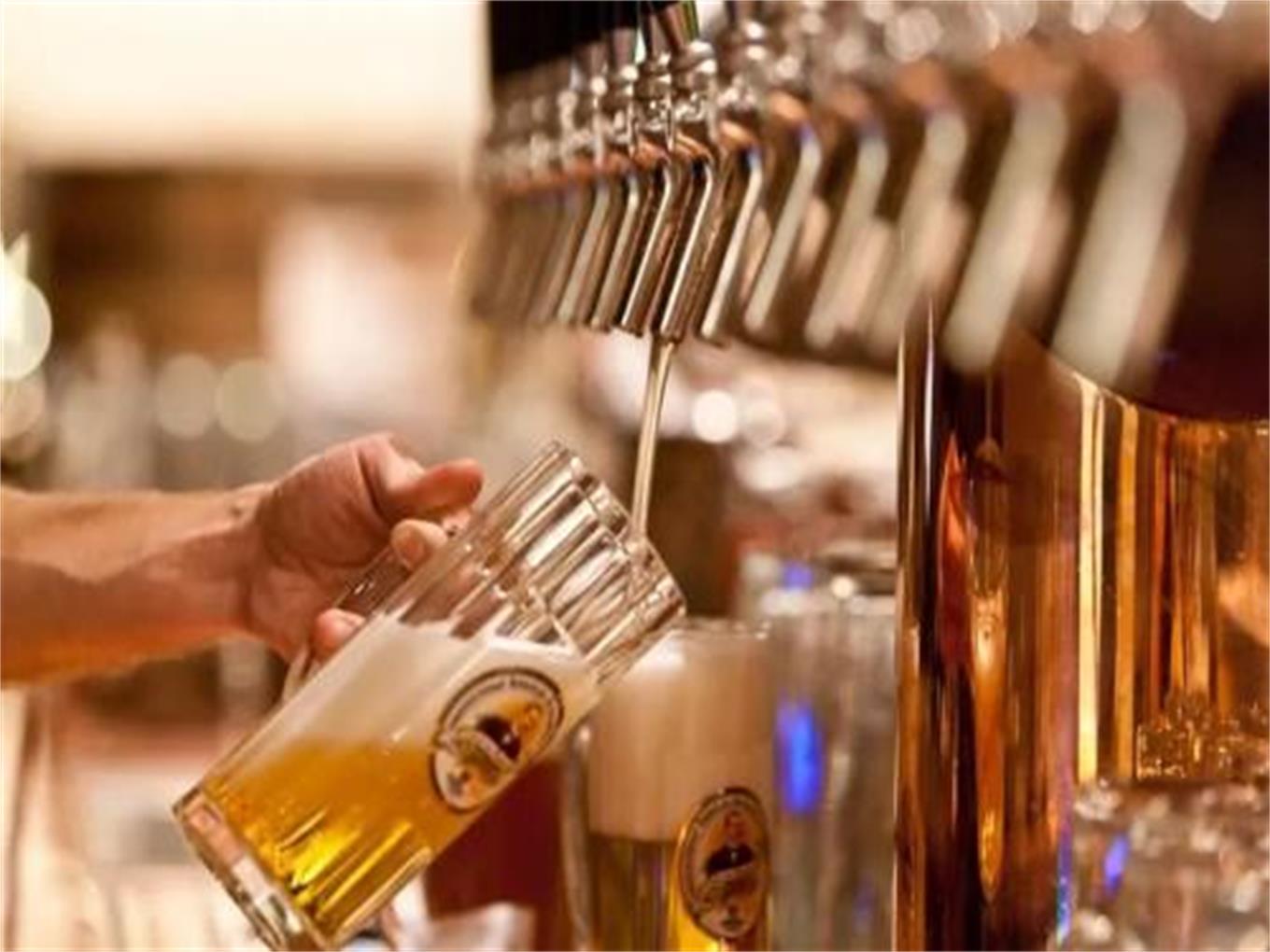Is Home Brewed Beer Safe?
Beer is a very popular drink in many cultures around the world.
It has been around for a very long time, and isn’t going away anytime soon.
There are today many different kinds of beer currently available in the marketplace.
Given the popularity of beer in many circles, this is a market that continues to steadily grow with the passage of time.
One of the most popular varieties of beer currently around, is that of the homemade beer.

Today, homemade beer is one of the most popular trends in beer circles.
Rather than trying out beer prepared for others, many happen to be interesting in preparing beers of their own; which is where home brewing comes into the picture.
As popular as it may be, there are many concerns about homemade beer. These include everything from safety to legal concerns.
When it comes to safety, there is one question that many wonder, which is,
“Is home-brewed beer safe?”
The answer to this question is neither a yes or no.
In other words, it is actually somewhere in-between. There are several reasons for this, the most important of which is given in the list below.
To start off, it is safe to say that home-made beer can be safe.
For much of human history, beer was never really produced in industrial facilities. On the contrary, they were produced at the local level, by small businessmen, often at home.
So the idea of home-made beer is not really something new. It is as old as beer itself. It is only now that people have started to take a fancy towards this style of beer-preparation.
Therefore, the answer to the question depends on a variety of considerations, the details of which are mentioned below.
Some of the considerations that must be taken into account, when figuring out if home-made beer is safe or not, are the following:
- The Quality of the Equipment Used
This is by far one of the most important things that are to be taken into account, when it comes to homemade beer safety.
In the case of industrial facilities, there are strict requirements as to the quality of beer that must be enforced. These standards are enforced with the help of legislation and local law enforcement.
This however, is not the case that you would get, when it comes to home breweries. There is always the tendency to ignore the quality of the equipment, which in turn can lead to the production of contaminated or otherwise low quality beer.
In simple words, the quality of the equipment used, in terms of sanitation, manufacturing quality and general maintenance will play a major role in the final quality of the beer, whether in terms of safety, taste or anything else.
- The Quality of the Work Environment
Another important thing that must be considered is the quality of the work environment.
The work environment refers to the place in which the beer is prepared, as well as other things such as the location where the beer is stored.
It is important that this entire area is maintained in a way that is as clean and hygienic as possible. Among the things that need to be taken into account are dust, dirt, pests (such as insects, rats, etc), and more, all of which will lead to the contamination of the beer if they aren’t eliminated.
- Health and Hygiene Standards Used by the Brewer
The next thing to take into account is the actual brewer of the beer.
As with any other food product, it is important that the brewer maintain adequate safety standards, when the beer is getting brewed.
These include, among others, things like the washing of hands, the usage of soap or other cleaning agents on the hand, covering of the hair with a hair net, etc.
All of these steps will ensure that the beer isn’t contaminated by the brewer at the time of preparation.
- Ingredient Quality
The next thing that must be taken into account is the quality of the ingredients.
There are great deals of ingredients that are added for the preparation of beer. These include, among others, hops, barley, etc.
It is important to ensure that these ingredients are stored in a clean and hygienic manner, and undergo thorough cleaning before being allowed to ferment and so on.
It may be tempting to use stale ingredients at times, given that beer is produced by allowing the ingredients to stale, but this has to be avoided. There is a difference between allowing the ingredients to ferment in a tank and on the other side, in the open.
- The Quality of the Preparation Process
Last but not the least, has to do with the actual preparation process.
This is but an amalgamation of all the above mentioned points, right from the time when the ingredients are stored, to the actual fermentation process and the final refining.
It is important to ensure that the process is carried out in a way that adheres to the kind of safety standards which would be expected in any factory.
In all, the question of whether homemade beer is safe or not, can be summed up as ‘yes’ and a ‘no’ at the same time.
With proper conditions, in terms of sanitation and hygiene, as well as preparation practices, homemade beer is very much safe to go for.
At the same time however, the wrong conditions will produce the kind of beers that might just end up being both unsafe as well as fatal, depending on just how badly it was prepared.
Ultimately, it depends on the brewer and the way he goes about with the brewing process that decides the quality of the finished product.
Additional FAQs About Home Brewed Beer Safety
1) Can home brewed beer make you sick from pathogens?
- It’s rare. Finished beer is typically low pH (~4.0–4.6), alcoholic, and hopped—conditions that inhibit many pathogens. The bigger risks are spoilage microbes (e.g., Lactobacillus, Pediococcus) that ruin flavor, not safety. Good sanitation and rapid wort chilling are key. Sources: CDC food safety primers; ASBC/MBAA hygiene guidance.
2) Is methanol poisoning a risk in home beer?
- Practically no. Methanol is associated with fruit brandy/distillation, not beer fermentation. Beer methanol levels are negligible and orders of magnitude below concern. Never distill beer without proper licensure and training. Sources: FAO/WHO methanol reviews.
3) What sanitizers are safest and most effective for home brewing?
- No-rinse acid anionic sanitizer (e.g., peracetic acid blends) or phosphoric acid-based sanitizers; iodine/iodophor is effective but can stain; chlorine should be avoided on stainless due to pitting risk. Follow label concentrations and contact times. Source: EHEDG/ASBC sanitation notes.
4) How do I prevent bottle bombs?
- Use accurate priming sugar calculators, verify stable final gravity for 2–3 days before packaging, dose evenly, and inspect bottles for chips. Consider pressure-rated bottles/caps or kegging with spunding. Store in boxes at ~68–72°F for conditioning, then chill. Source: Brewers Association packaging safety tips.
5) Are there special safety steps for hazy IPAs and fruited sours at home?
- Yes: heavy dry hopping can restart fermentation (hop creep)—cold crash, measure gravity, and consider pasteurizing fruited beers or keep them refrigerated. Purge vessels to limit oxygen, and use robust blow-off to prevent clogs. Sources: MBAA hop creep papers; ASBC methods.
2025 Industry Trends: Home Brewed Beer Safety
- Better measurement at home: Affordable handheld dissolved oxygen meters and ATP swabs are increasingly used by advanced homebrewers for sanitation verification.
- Low-oxygen and cold-side hygiene: Oxygen-scavenging caps, closed transfers, and CO2 purging have become mainstream to improve flavor stability and safety margins.
- All-in-one systems with safer electrics: Modern 120/240V systems include GFCI protection, thermal cutoffs, steam management attachments, and UL-listed controllers.
- Yeast quality/access: Wider availability of fresh, QC-tested yeast packs reduces contamination and off-flavor risk.
- Fruited beer risk management: Growth in guidance and mini-pasteurization or keep-cold recommendations to prevent refermentation injuries.
2025 Homebrew Safety Benchmarks
| Topic | Typical Target/Practice | Notes |
|---|---|---|
| Wort chilling | ≤20 min to yeast-pitch temp | Reduces DMS, contamination risk |
| Cold-side oxygen | ≤0.5 ppm DO (advanced) | Closed transfers, purged lines |
| Sanitizer contact time | 1–2 min (per label) | Maintain correct ppm/pH |
| Stable FG before package | 48–72 hrs unchanged | Prevents overcarbonation |
| Package CO2 volumes | 2.2–2.6 vol (ales), 2.6–3.0 (wheat) | Use priming calculators |
| Fermentation temps | Within yeast spec ±1–2°C | Temp control = cleaner beer |
Sources: Brewers Association (BA) and Master Brewers Association (MBAA) technical resources; ASBC methods; vendor spec sheets for homebrew equipment (2024–2025)
Latest Research Cases
Case Study 1: Closed Transfers Cut Oxidation and Contamination (2025)
Background: An advanced homebrewer observed rapid staling in IPAs and occasional pellicles in bottles.
Solution: Implemented CO2-purged kegs/lines, closed transfers from fermenter to keg, and added a 0.5 μm carbonation stone with sanitary quick disconnects; verified sanitation using ATP swabs.
Results: Packaged DO reduced from ~1.2 ppm to 0.15–0.25 ppm; hop aroma retained >4 weeks; zero contamination events across 15 batches.
Case Study 2: Managing Hop Creep and Bottle Safety in Hazy Ales (2024)
Background: Overcarbonation and gushers occurred in bottle-conditioned hazy IPA.
Solution: Cold crash to 0–2°C, hold 48 hrs, recheck gravity; reduce dry hop contact time to 48–72 hrs; use precise priming sugar by weight and conditioning at 20–21°C with 1-week cold storage post-carb.
Results: No bottle bombs over 10 batches; consistent carbonation at 2.4–2.5 vol; improved haze stability and shelf-life.
Expert Opinions
- Dr. Charlie Bamforth, Distinguished Professor Emeritus of Malting & Brewing Science
“Beer’s intrinsic hurdles make it safe, but oxygen and hygiene determine whether it’s delicious. Control fermentation temperature and keep oxygen out after fermentation.” - John Palmer, Author of “How to Brew”
“Most homebrew ‘off’ flavors are process issues, not pathogens. Clean first, sanitize right before use, and chill fast—these three steps solve most problems.” - Dr. Tom Shellhammer, Professor of Fermentation Science, Oregon State University
“Dry hop management matters for safety and quality—hop creep can drive unintended refermentation. Measure gravity, and don’t package until the beer is truly stable.”
Practical Tools and Resources
- Brewers Association – Draft and packaging safety, homebrew best practices: https://www.brewersassociation.org
- Master Brewers Association of the Americas (MBAA) – Technical talks/papers: https://www.mbaa.com
- ASBC Methods of Analysis – Micro/chemistry methods: https://www.asbcnet.org
- CDC Home Food Safety basics: https://www.cdc.gov/foodsafety
- Brewfather and Brewer’s Friend – Priming and carbonation calculators: https://brewfather.app | https://www.brewersfriend.com
- Homebrew Talk community sanitation threads: https://www.homebrewtalk.com
- EHEDG hygienic design overview: https://www.ehedg.org
Sources and further reading:
- Brewers Association 2024–2025 Quality and Safety briefs
- MBAA Technical Quarterly articles on oxygen control and hop creep
- ASBC methods for DO, microbiology, and sanitation verification
- CDC food safety education resources
Last updated: 2025-09-08
Changelog: Added 5 targeted safety FAQs; inserted 2025 safety/quality trends with benchmark table; provided two recent case studies; included expert viewpoints; compiled practical tools/resources with authoritative links.
Next review date & triggers: 2026-01-15 or earlier if new homebrew safety guidelines emerge, low-cost DO/ATP tools become widely available, or packaging-related injury reports increase.
Share this entry
Interested in learning more about Brewing Systems including additional details and pricing information? Please use the form below to contact us!
YOLONG BREWERY EQUIPMENT FAQS
- Commercial Brewery / Craft Brewery / Microbrewery / Nanobrewery
- What is The Difference Between Craft Beer and Industrial Beer?
- The Bespoke Differences In Custom Brewing Systems
- Everything You Need to Know About Kettle Souring
- How to Choose Brewing Equipment for Your business?
- How To Choose The-Best Partner To Build Your Commercial Microbrewing System?
- Two Detection Sensors That You Need To Use In Your Brewhouse System
- Remote Control Applications in Brewing Equipment/How does it work?
- How To Clean Your Brand New Brewery Tanks?

